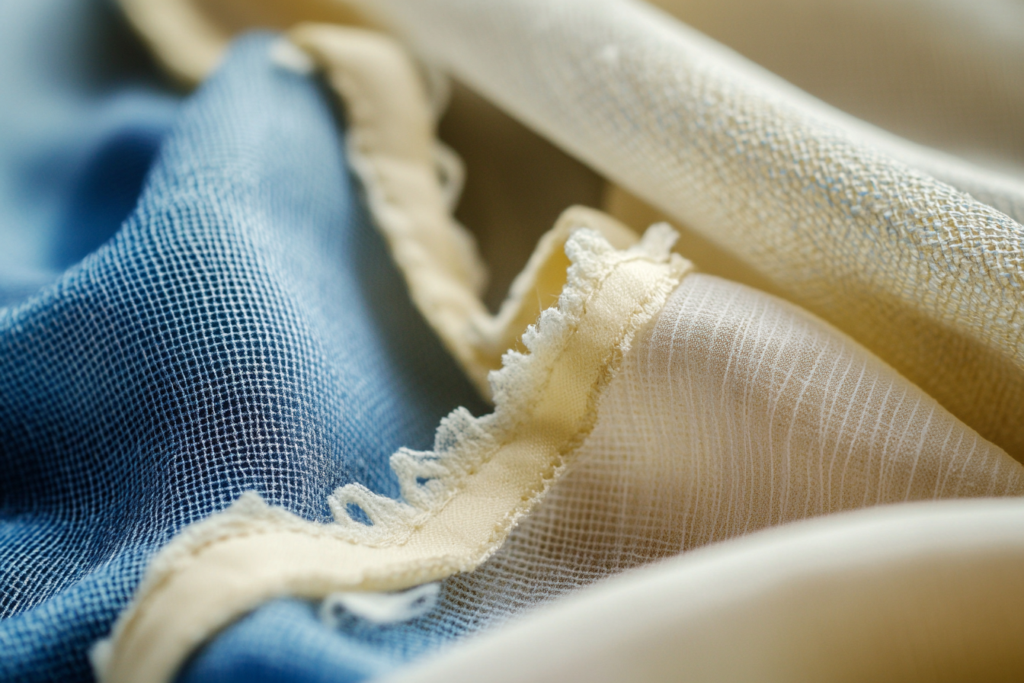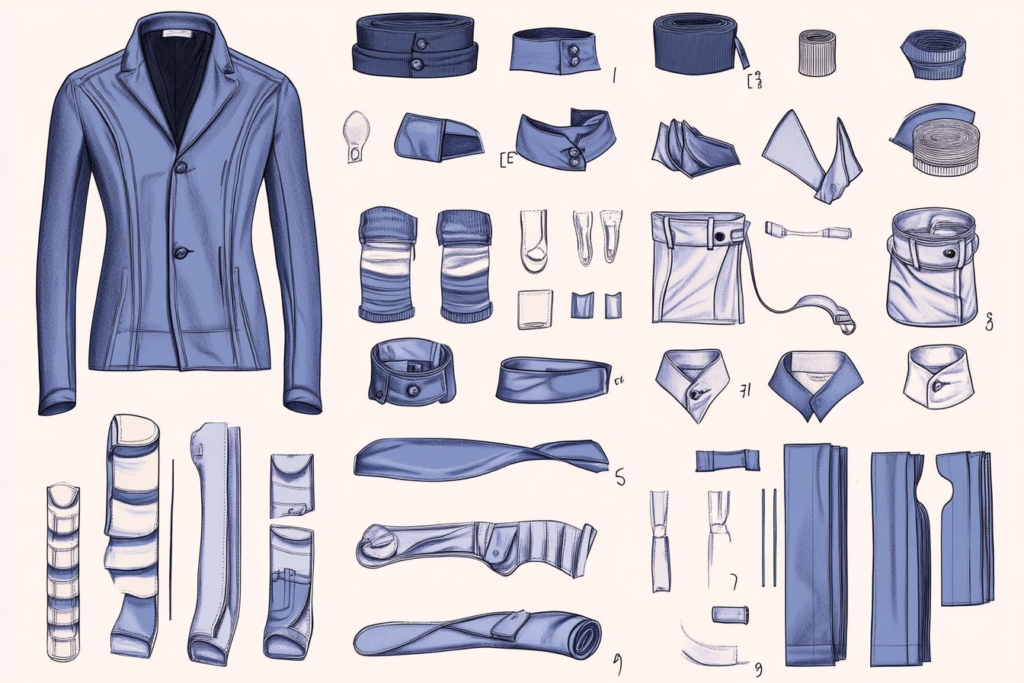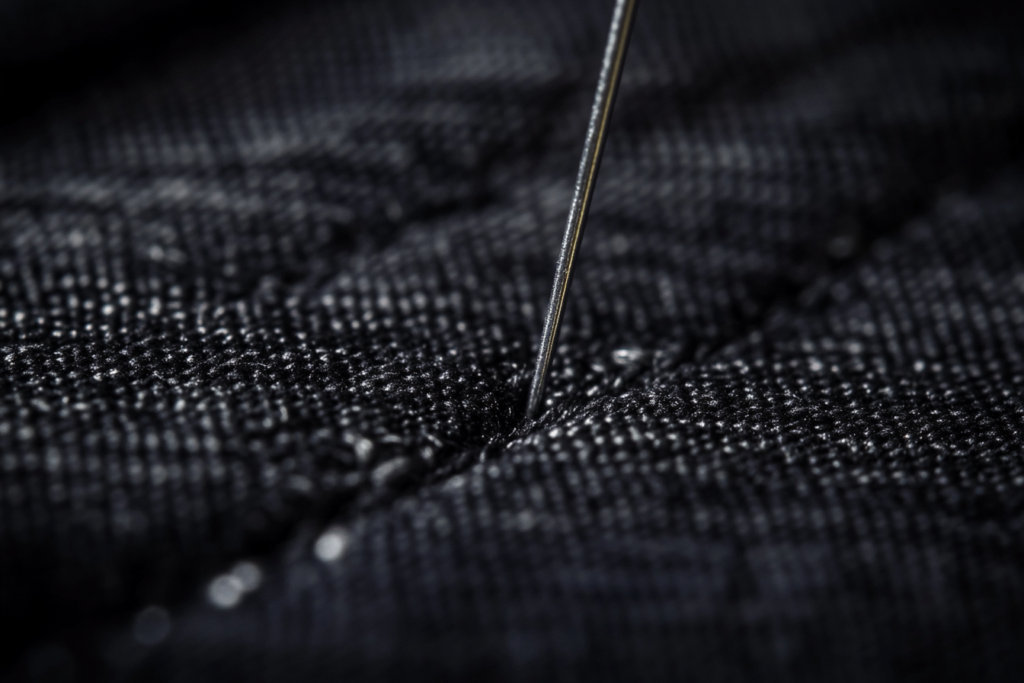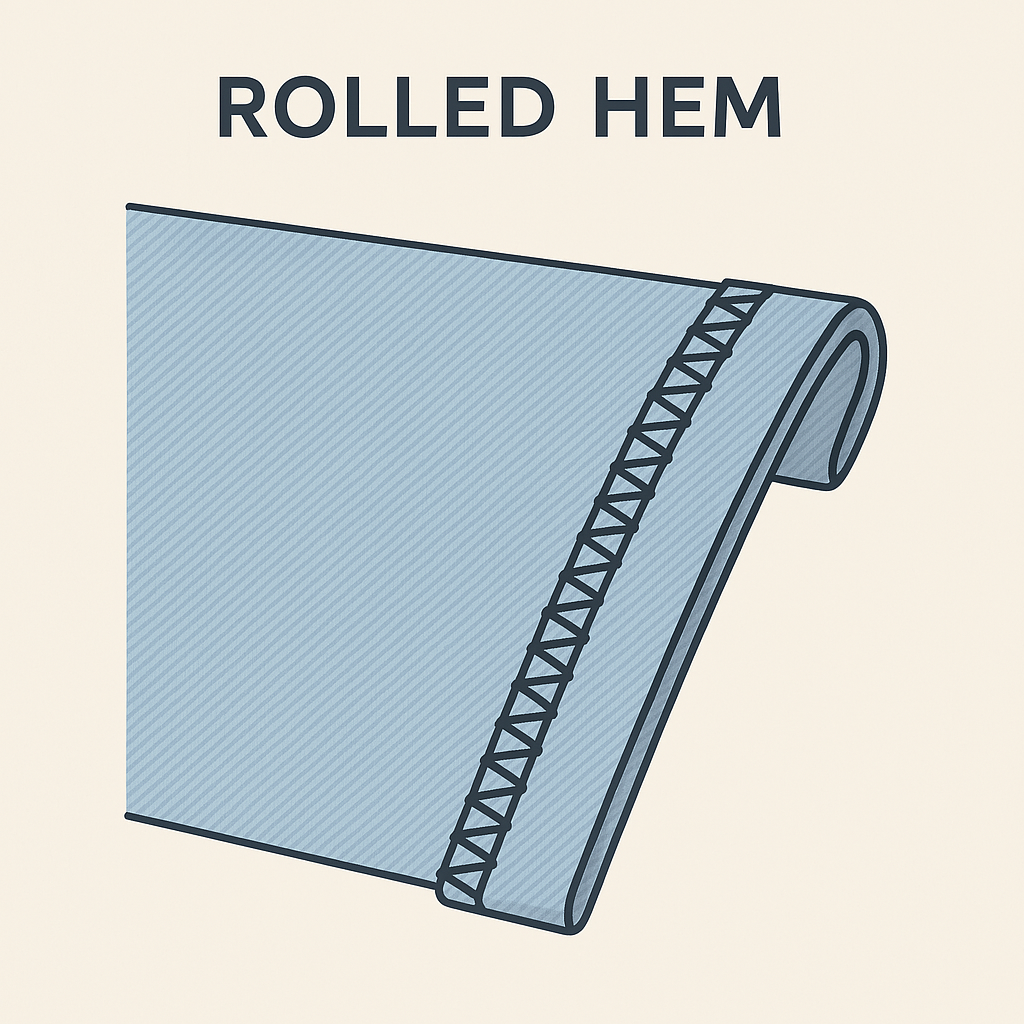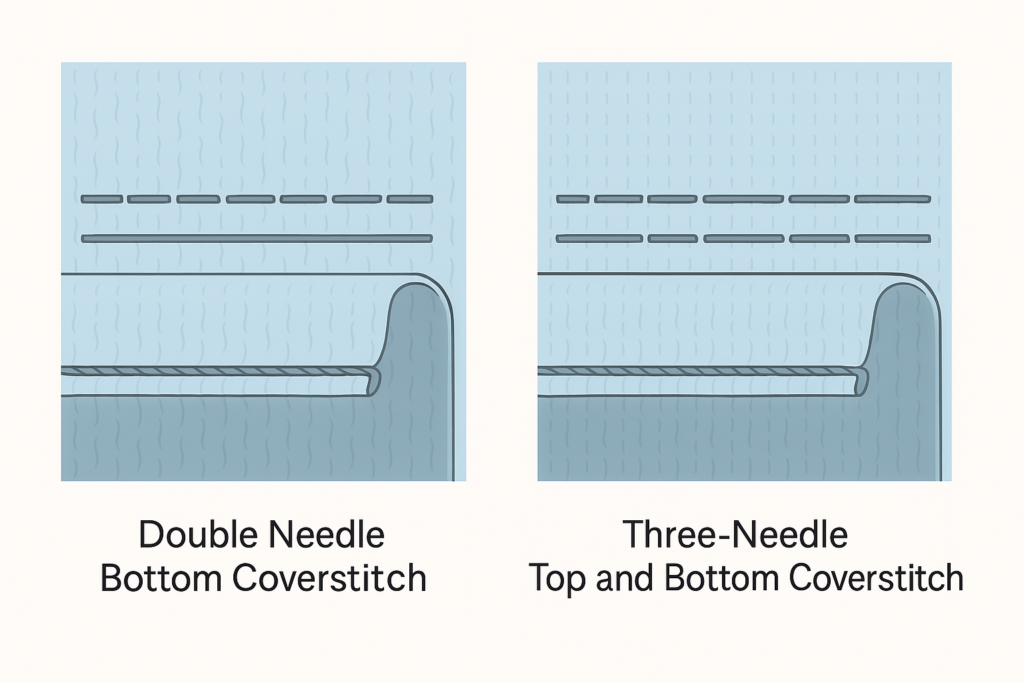Hemming: The Finishing Touch to Garment Edges
Hemming is the process of finishing garment edges by turning up the raw edge and securing it. Learn various hemming methods, their applications, and how they enhance garment structure and drape.
👗 What is Hemming?
Hemming is the technique of finishing the edge of a garment by folding the raw edge inward and securing it through stitching, gluing, or bonding. It is one of the most fundamental construction techniques in clothing production, used to improve both function and aesthetic appearance.
✂️ Why is Hemming Important?
Hemming serves multiple purposes:
- ✅ Prevents Fraying: Protects the raw edge from unraveling.
- ✅ Improves Durability: Strengthens the garment edge.
- ✅ Adds Weight and Drape: Enhances how the fabric falls and moves.
- ✅ Finishes the Look: Creates a polished and professional edge.
🧵 Common Hemming Techniques
| Hemming Type | Description | Ideal For |
|---|---|---|
| Turned-Back Hem | The raw edge is folded back and stitched. | Everyday garments, cotton fabrics. |
| Rolled Hem | A narrow hem with a double fold, rolled and stitched in place. | Sheer or lightweight fabrics. |
| Serged Hem | The edge is trimmed and overlocked using a serger. | Knitwear, stretchy fabrics. |
| Beveled Hem | The fabric is folded and pressed at an angle for smoother drape. | Skirts, dresses. |
| Hemmed Hem | Traditional method using straight stitching after folding the edge. | Standard garments. |
🪡 Special Hemming Techniques
🧷 Hand Hemming
Used for delicate or transparent fabrics like chiffon or organza. The hem is folded twice and sewn using a discreet hand stitch for minimal visibility.
🔗 Weighted Hem
For improved drape, a chain or weighted tape can be inserted into the hem of coats or dresses to ensure even hanging, particularly for flowy or stretch fabrics.
🧵 Hemming Stretch Fabrics
Coverstitch or serger hems are often used for stretch fabrics to allow the hem to move without breaking the threads.
📐 Hemming Placement & Applications
- Hems on Skirts and Dresses: Define the finished length and add shape.
- Cuffs and Sleeves: Maintain sleeve structure and add comfort.
- Bottoms of Pants: Essential for fit and wearability.
- Necklines: Prevent distortion or fraying in unlined areas.
- Home Textiles: Curtains, tablecloths, and bed linens also use hemming.
🧵 Hemming for Style and Function
💡 Adds Weight and Drape
Wide hems, particularly on lightweight fabrics, give garments a structured silhouette and fluid motion.
🧵 Supports Fit
Well-executed hems help keep a garment in place and well-fitted, especially around moving areas like arms and legs.
🪄 Tips for Perfect Hemming
- ✔ Use a pressing iron to fold and crease hems before stitching.
- ✔ Match the thread color to avoid visible stitching.
- ✔ Use seam tape or basting stitches for accuracy.
- ✔ Choose the right hem style for the fabric type and garment design.
🖼️ Illustration of Hemming Techniques
Here is an illustration showing various types of hemming, including turned-back, rolled, and serged hems:
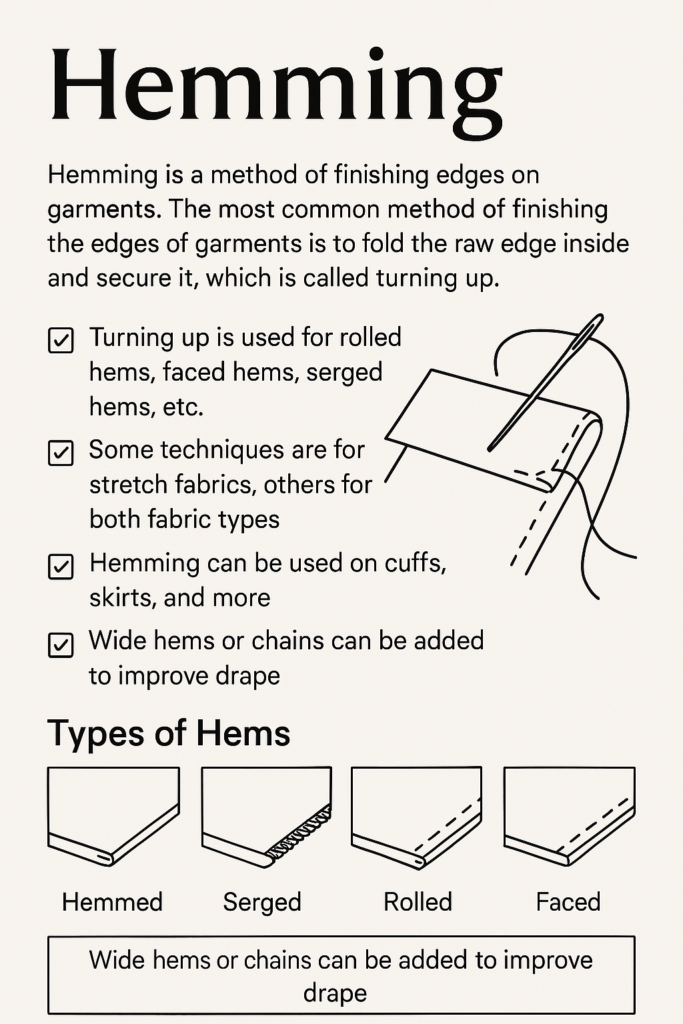
Illustration: Types of hems applied to different garments.
✅ Conclusion: Hemming for Beauty and Longevity
Whether you’re crafting a delicate silk scarf or constructing a rugged pair of trousers, hemming ensures that your garment has a clean, strong, and attractive finish. From functional reinforcement to stylistic enhancement, hemming is an essential part of garment construction that combines both art and engineering.
